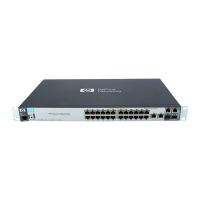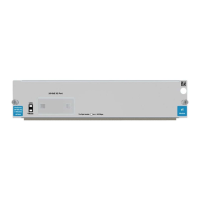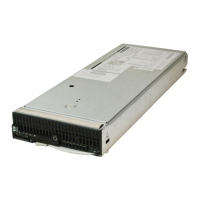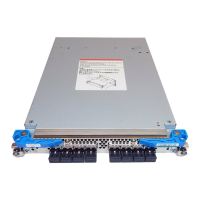Port Trunking
Web: Viewing Existing Port Trunk Groups
Caution Unless spanning tree is running on your network, removing a port from a trunk
can result in a loop. To help prevent a broadcast storm when you remove a
port from a trunk where spanning tree is not in use, ProCurve recommends
that you first disable the port or disconnect the link on that port.
Syntax: no interface < port-list > lacp
Removes < port-list > from any dynamic LACP trunk and
returns the ports in < port-list > to passive LACP.
In this example, port C6 belongs to an operating, dynamic LACP trunk. To
remove port C6 from the dynamic trunk and return it to passive LACP, you
would do the following:
ProCurve(config)# no interface c6 lacp
ProCurve(config)# interface c6 lacp passive
Note that in the above example, if the port on the other end of the link is
configured for active LACP or static LACP, the trunked link will be re-
established almost immediately.
Web: Viewing Existing Port Trunk
Groups
While the web browser interface does not enable you to configure a port trunk
group, it does provide a view of an existing trunk group.
To view any port trunk groups:
Click on the Status tab.
Click on
[Port Status].
12-17

